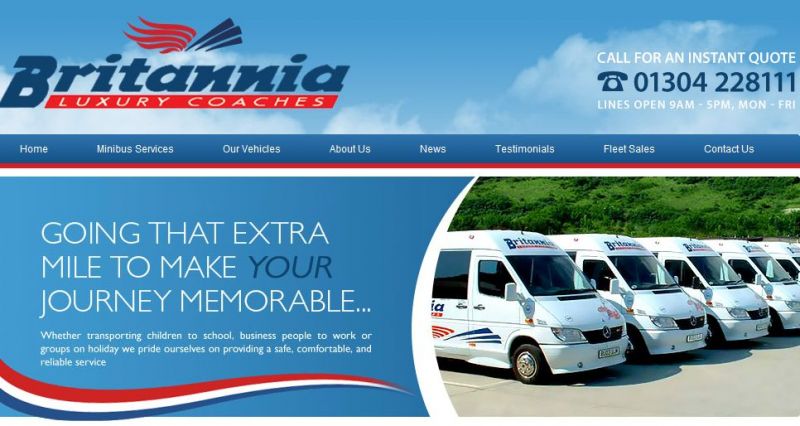Popular Marketing Posts
Five E-Commerce SEO Essentials, Fresh from Google
It’s not often that Google itself crawls out of the woodwork to offer clear, concise and comprehensively useful SEO advice. They’re more inclined to be somewhat elusive and enigmatic, which doesn’t tend to be particularly helpful.
Hence, when Google’s Alan Kent shared some concrete SEO advice for ecommerce business owners in a recent video, we were all ears. As were online sellers worldwide, who in many cases had been hit hard by Google’s recent May Core Update.
Extracted from the video and summarised for simplicity, here are five essential ecommerce SEO tips Alan Kent shared with the world:
Tip 1- Focus on the Technical Basics
“The first tip is to nail the technical basics. Maybe you've developed a great content strategy, but you're not getting the traffic you expected. The first step is to make sure you have the technical basics in place. For example, if Google cannot crawl your website, it does not matter how great your content is.”
“One great tool to find technical issues on your website is Google Search Console. There are a number of reports available reporting on a range of potential issues on your site. To address issues on your site, follow the advice given by Google Search Console. If there were issues with individual URLs that you have since fixed, use the URL Inspection tool to check to see if issues have been fully resolved.”
“Also, if you control the URL structure of your site, make sure your URLs and internal linking are friendly to crawlers.”
Tip 2 – Keep Your Content Relevant
“Tip number two is to have content relevant to users at different stages of their shopping journey. For example, your home page may be a great landing page for a shopper who wants to buy a photography gift but does not know what to buy yet.”
“Your home page often describes many products you have in stock, along with special offers. Category pages allow you to get more targeted, describing areas you have a range of products in.
“For example, bags to hold photography equipment. Rather than products, shoppers early in their shopping journey may be looking for advice on how to pick the right product. Product reviews may be more important to such shoppers. Providing useful resources for shoppers may also help increase the recognition and reputation of your website.
“To check the breadth and quality of your site, think about likely searches by shoppers at different stages in their shopping journey. Once you have a set of queries, try them out. Does your site come up well positioned? What about your competitors? Also check the Search Console Performance Report for queries where your site is being shown.
Tip 3 - Mark up Your Product Variant Pages
“The third tip is to make sure you mark up your product variant pages correctly. Product variants are when you have multiple colours or sizes of the same product. Informing Google of the relationship between product pages can help Google better understand your site content.”
“To look for issues, Google Search Console can be used to explore the relationship between pages and the levels of traffic. The URL Inspection tool can also be used to check the status of individual pages. On your side, it is recommended to give each product variant a unique URL.”
“For example, add query parameters to hold the product colour or size, then select one of the variants to be the canonical variant. All variants should include the URL of the canonical page to help Google understand the relationship between the pages. Finally, check that the canonical page includes text describing all of the variants available, such as all colours and sizes.”
“This could be using text in the product description, such as "this product is available in green and blue." But it can also be as simple as having a colour swatch on a page to let the user change the colour with alt text describing each colour choice in text. This is so the canonical product variant page will match searches for all of the variant colours and sizes a user may try.”
Tip 4 – Be Patient
“The next tip is is, wait for it, to be patient. SEO, unfortunately, is a long game. Some ranking signals may take many months to change. Worse, there is no guarantee of success. The HTTP Archive reports that approximately 20% of the website it archives support e-commerce.”
“That means there is a lot of online competition out there. Google Search Console, as previously described, is the best tool to check that your content on your site is being indexed correctly without errors. It can also be used to explore traffic to your site.”
“If traffic is trending upwards, that may be a positive sign you're on the right track. It can take months to reap the benefits of a content creation strategy, but that does not mean there is nothing you can do until then. Think about how to diversify your site traffic sources. “
“Do you have a marketing campaign? Are you active on social media? Do you have an email newsletter? Have you approached independent reviewers to review products on your site? If you also have a physical store, do you have signs or pamphlets that link to your online presence with URLs or QR codes?”
Tip 5 – Seek Expert SEO Support
“Tip number five is to seek professional help for your website.”
“There are many agencies available to provide expert SEO advice. Beware, however, of schemes that claim to improve your ranking by paying them to create more links to your site. “
“Artificially linking to pages on your site goes against Google quality guidelines and may have negative repercussions on your page rankings.”

